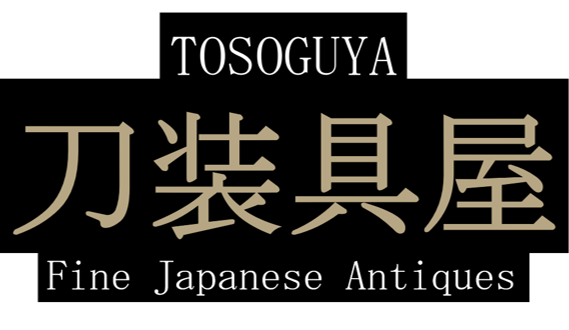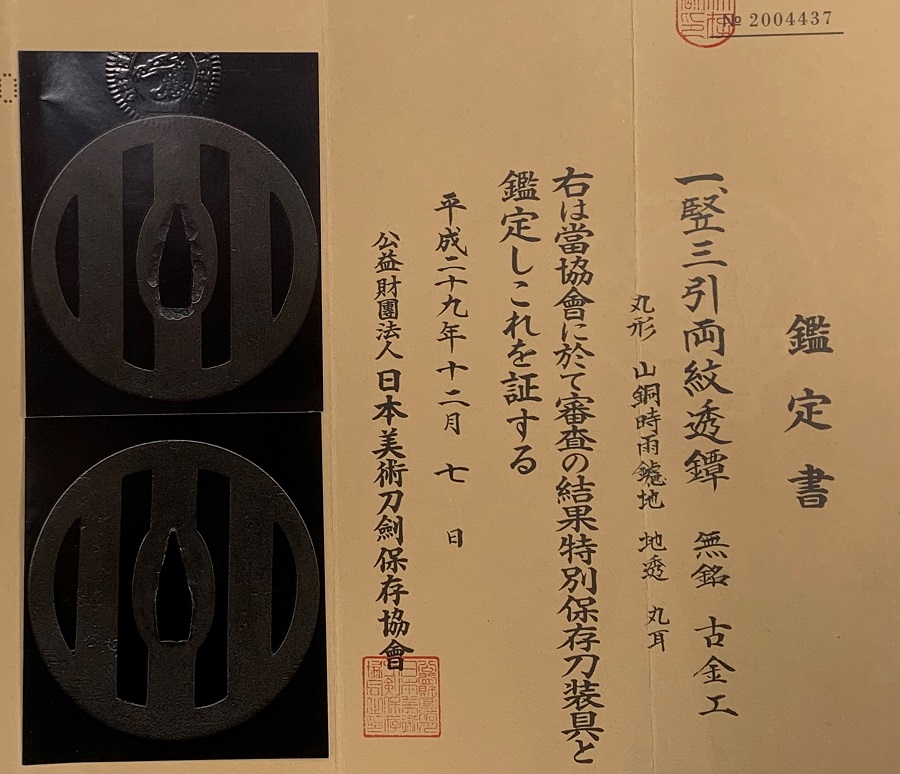

Ko-Kinkō Tsuba
Rare type of ko-kinkō tsuba (古金工鐔) which is entirely in the form of the Date clan mon. The mon is executed in positive open work, and consists of 3-vertical bars enclosed in a circle (maru-ni tate mitsu-hikiryōmon sukashi, 丸に竪三引両紋透). The tsuba is made of yamagane, with fine linear file marks applied to the plate, termed tate-yasuri-ji or shigure-yasuri-ji (竪鑢地 or 時雨鑢地). This filing pattern is representative of fine rain / drizzle. The yamagane patina retains great color, and plays well with the remnant lacquer. Considering the age of the tsuba, it is surprising that it remains unchanged or ubu, and has not been modified for use with saya implements. This suggests the tsuba was deemed deserving of preservation by it's long line of owners.
Tsuba representing mon are rare and unusual prior to Edo period. Mon representing parallel bars were used by a number of clans and their branch families, with the most recognizable and common being the Ashikaga, Miura, Nitta, Ashina and Date. They varied in the number of bars, vertical or horizontal orientation, as well as by bar thickness. The mon of this tsuba is a primary mon of the Date clan. Like most clans, the Date utilized a number of primary mon. Their best known mon is rather a complex fluid design called the Sendaizasa, which works best on lacquer and textiles, but is not practical for other media such as metal. Instead, a simpler mon was preferred, such as this 3-bar mon. A number of scrolls picturing Date clan heads illustrate this mon on their armors. This a fairly early and rare example of samurai heraldic imagery in tsuba form. Comes with custom fitted box.
Translation of the NBTHK Tokubetsu Hozon paper description follows:
竪三引両紋透鐔 (Tate mitsu-hikiryōmon sukashi tsuba)
無銘 古金工 (Mumei Ko-kinkō)
丸形 山銅時雨鑢地 (Maru-gata yamagane shigure-yasuri-ji)
地透 丸耳 (Ji-sukashi maru-mimi)
Heisei 29th year (2017) December 7th
Measurements: 9.4cm x 9.4cm x 0.35cm
Late Muromachi - Momoyama Period (室町 - 桃山時代)
$4,000
